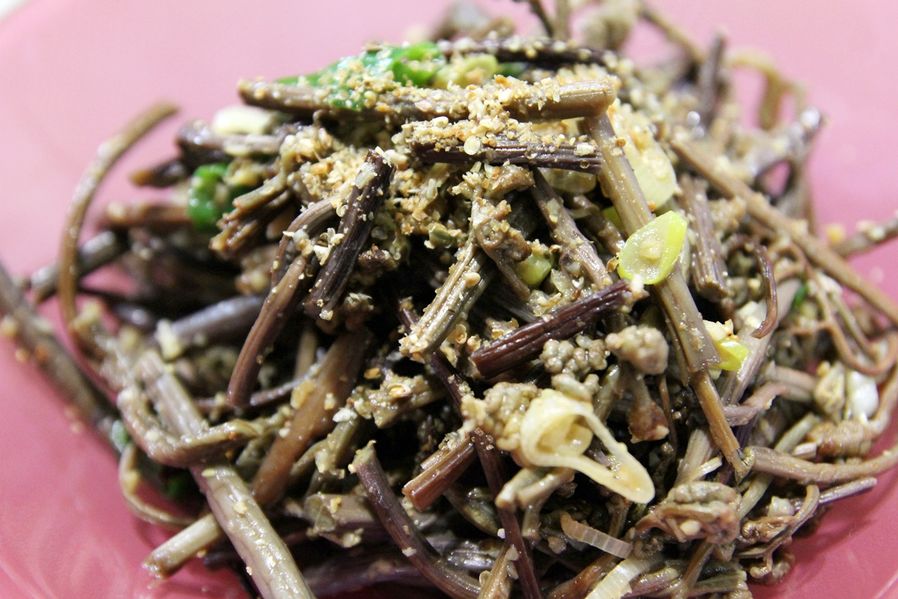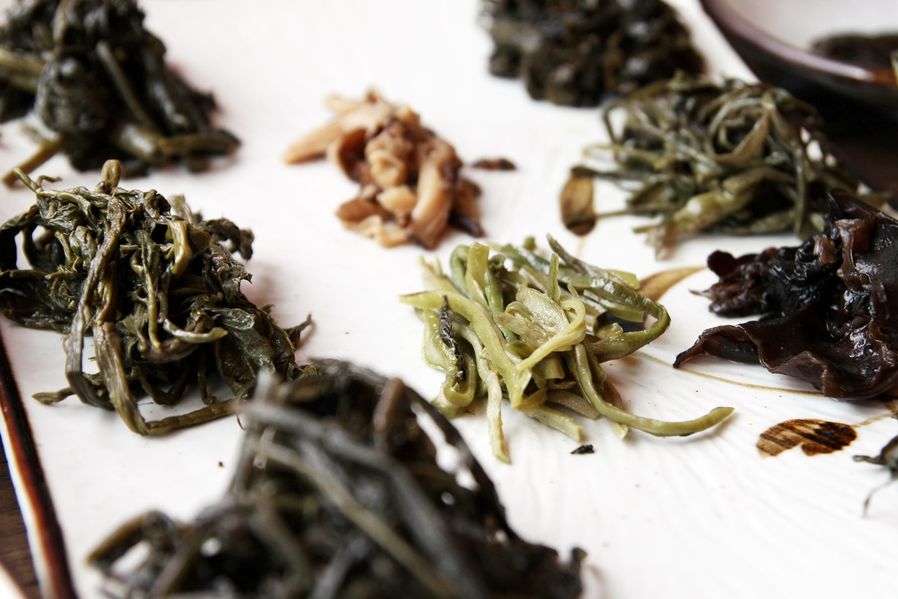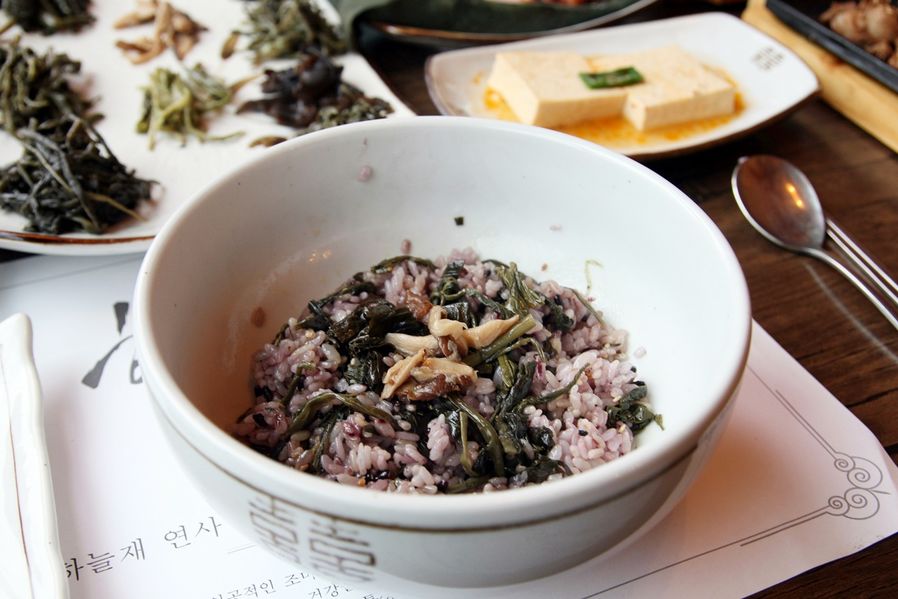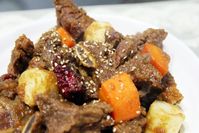1. Ingredients for Namul
- Primary ingredients: Vegetables (bean sprouts, bracken and balloon flower roots)
- Secondary ingredients: Seasoning (salt, soy sauce and sesame oil) and vegetables (garlic and spring onion)
2. Taste evaluation
-Spicy: ☆☆☆☆☆
-Salty: ★★☆☆☆
-Sweet: ☆☆☆☆☆
-Sour: ☆☆☆☆☆
-Toasted flavor: ★★★☆☆
-Original tastes and flavors of vegetables: ★★★★☆
3. Introduction to Namul
Namul refers to wild herbs and vegetables usually boiled or dried before eating. Koreans enjoy eating wild herbs and vegetables as side dishes at home, not to mention on special occasions.
In old times, they could not get wild herbs or vegetables in cold winter so they dried those in autumn in advance to prepare winter. As Silla Dynasty prohibited the taking of any life based on Buddhism, people naturally started to grow various vegetables and they still do.
Since then, Namul has been popularized that there have been various recorded recipes as well as their ecological characteristics, and there have been so many kinds of special herbs and vegetables according to the temperature in each region since Joseon Dynasty era that people still enjoy.
Namul is wild herbs and vegetables collected on the mountain or field.
Raw vegetables obtained in each region are boiled or stir-fried, seasoned with soy sauce or salt, mixed with sesame oil or perilla oil and flavored with garlic and spring onion.
Vegetables are usually cooked to keep their taste and scent and minimize destruction of nutrients.
People eat raw Namul without anything else but you could dry it in the sun and cool wind to keep it for the whole year.
The dried Namul has a strong taste and scent of each kind as well as unique texture and deep taste. And it’s simply cooked in order to highlight the original taste of vegetables.
It’s a simple cuisine but it’s already well known throughout the world.
It’s because Namul is main ingredient for Bibimbap, the famous Korean traditional food in the world.
If you look into Bibimbap, you’ll see rice, meat and Gochujang paste and the rest is called Namul. Each vegetables used in Bibimbap are separately cooked and put on the top.
The reason why Bibimbap is considered as a health food is probably because of this Namul.
I’d like you to try this healthy Korean food with unique scent and flavor of each vegetable.
Search on Wikipedia
4. Kinds of Namul
Namul has a long history in Korea and there are so many kinds of it in each region. I’ll introduce you a few popular ones in Korea.
* Kongnamul-muchim(seasoned bean sprouts) – As the most popular Namul, it is made with bean-tasted raw vegetables boiled and seasoned with spicy or spicy seasoning.
* Gosari-namul-bokkeum(stir-fried fern bracken) – Boiled and fried fern bracken is stir-fried with salty sauce. Usually used in Bibimbap.
* Chwinamul-muchim – Boiled and dried Chwinamul seasoned with salt. Has unique scent.
* Doraji-namul-bokkeum(stir-fried balloon flower) – Raw balloon flower is seasoned with salt and stir-fried. Characterized by sour flavor.

Canon EOS 550D | f/4.5 | iso 400 | 2013:04:25 17:23:18 | Flash did not fire, compulsory flash mode | 42mm
5. How to enjoy Namul even more
Namul can be cooked with raw vegetables or dried vegetables. And I say you should try vegetables dried in the wind and the sun rather than raw vegetables.
Dried ones have deeper taste and scent and they have unique texture as you chew. Plus the nutrition they provide will make your meal healthier.
Namul is provided as side dishes for simple cuisine like Korean set menu with stew or advanced culinary like Hanjeongsik.
If you feel the delicate texture and taste of Namul, you’d notice that this is the taste of nature, nothing artificial about it.
Koreans often eat Bibimbap, a bowl of rice mixed with different kinds of Namul. You could put one of Korean traditional saucesㅡsoy sauce, Gochujang paste and Deonjangㅡ and a little bit of sesame oil before you mix it.
It’s low-calorie food so you might as well try this if you are already spoiled by high-calorie foods like Bulgogi, Galbi or Samgyupsal.

Canon EOS 550D | f/4.5 | iso 400 | 2013:04:25 17:30:14 | Flash did not fire, compulsory flash mode | 24mm










